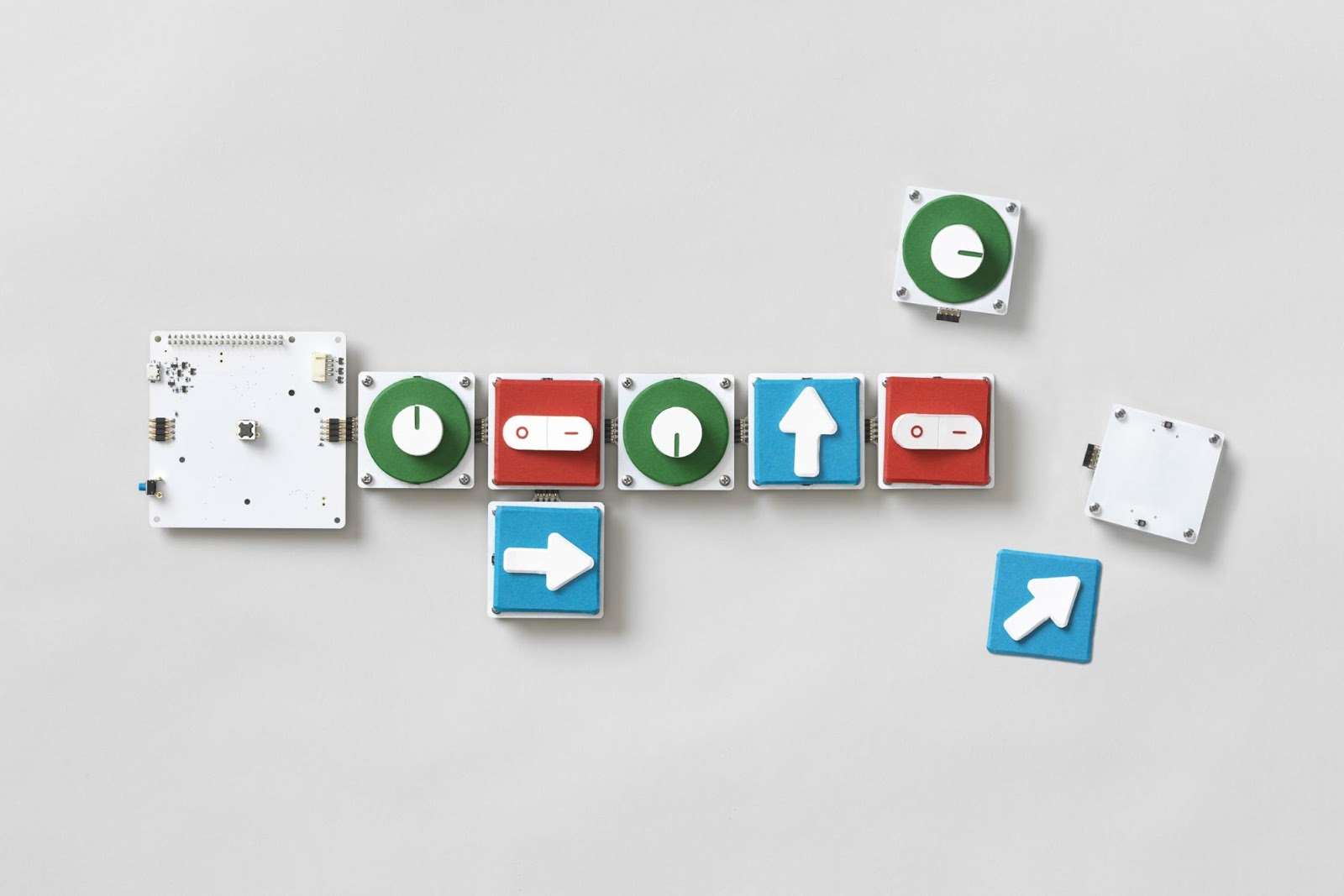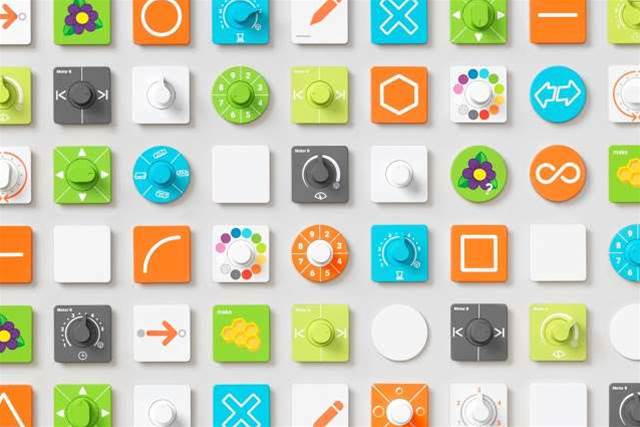
Google Bloks.

Google has revealed Project Bloks, a collection of toys that that physically represent computer code instructions like on/off and that can be joined together, enabling kids to learn to program through tactile play.
The Bloks research project was unveiled at the International Society for Technology in Education (ISTE) 2016 conference in Colorado, where 16,000 educators from around the world have gathered this week, including a number from Australia.
Bloks – which was co-developed by Google Research, a Stanford University researcher and Ideo – is an open hardware platform that anyone can use to “build physical coding experiences”.
What was shown off today was a prototype but Google hopes to further develop the concept in collaboration with educators, as the main target end users are kids.
There are three components in the Bloks system – a Raspberry Pi Zero-based “brain board”, “base boards” that connect to the brain, and “pucks” – physical representations of programmable commands – that sit on top of each base board.
By daisy-chaining a number of base boards to a brain, kids can create simple programs that can be used to control a variety of things.
“The base boards can be rearranged in different ways and wrapped in different forms and materials to create all sorts of physical coding experiences,” said Joao Wilbert, technology lead, Google Creative Lab.
“Like a music maker where you use physical code to compose music and send it to a wireless speaker.
“Or a sensor lab where you use physical code to experiment with sensors around you, like detecting a drop in temperature and then switching on a light.
“Or a coding kit where you use physical code to control toys, like getting a robot to draw a shape on a piece of paper.”
The pucks are the centrepiece of the Bloks system; the types of commands they can run are “infinite” and they are very cheap to produce, according to Google.

“Pucks can be programmed with different instructions, such as ‘turn on or off’, ‘move left’ or ‘jump’. They can also take the shape of many different interactive forms—like switches, dials or buttons,” Google said.
“With no active electronic components, they’re also incredibly cheap and easy to make.
“At a minimum, all you'd need to make a puck is a piece of paper and some conductive ink.”

Bloks fits into a research area known as tangible programming. Google acknowledges in its announcement and an explanatory white paper the research work that has preceded Bloks – which dates back to the 1970s.
However, it sees Bloks as a simple, open way of bringing the concept of tangible programming to as many people as possible.
“Designing kits for tangible programming is challenging—requiring the resources and time to develop both the software and the hardware,” Google said.
“Our goal is to remove those barriers. By creating an open platform, Project Bloks will allow designers, developers and researchers to focus on innovating, experimenting and creating new ways to help kids develop computational thinking.”
“The ultimate aim of Project Bloks is to give all the work we’ve done back to the education research and development community for free to accelerate the field of physical programming for kids,” Google Creative Lab’s project lead Jayme Goldstein added.











